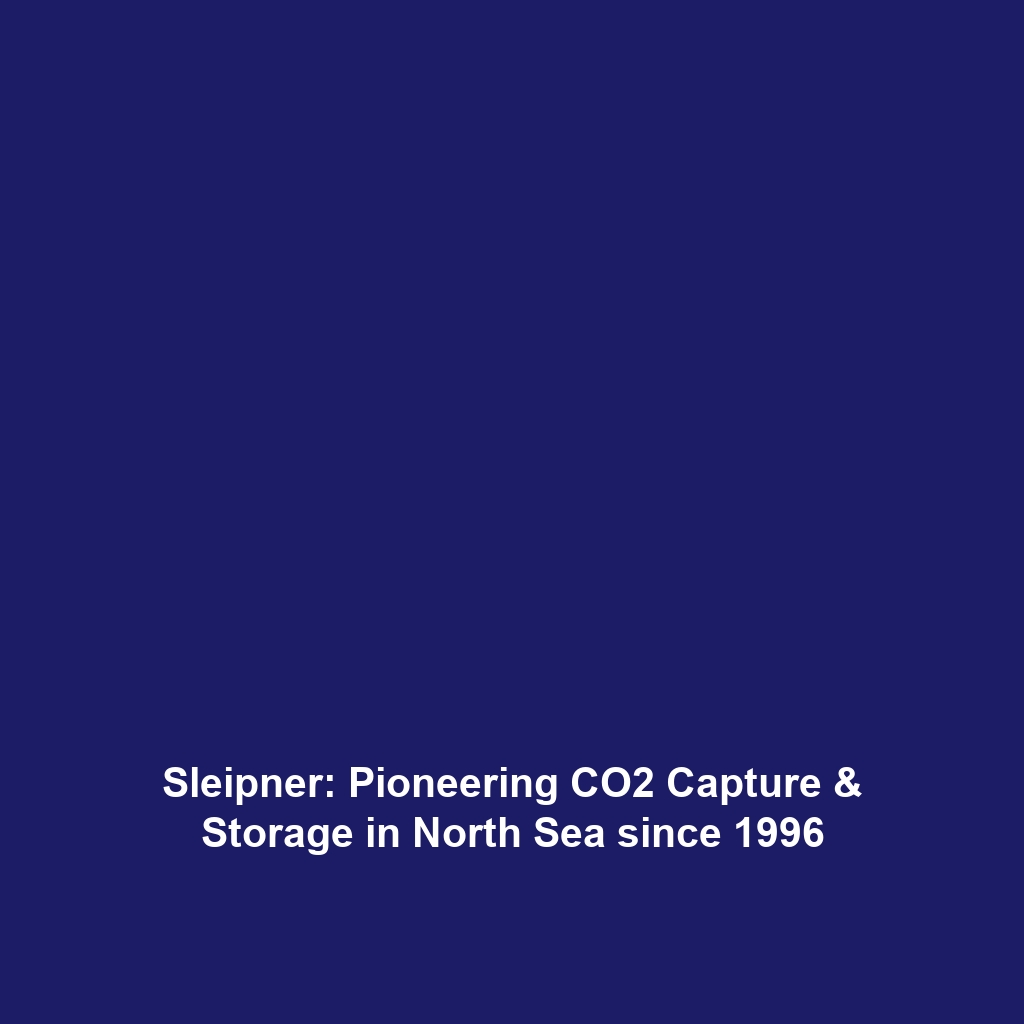Sleipner: A Benchmark in Carbon Capture & Storage (CCS)
Introduction: The Sleipner project, operational since 1996, stands as a pioneering initiative in the realm of Carbon Capture & Storage (CCS). Located in the North Sea, it has successfully captured and stored over 20 million tons of carbon dioxide (CO2) emitted from natural gas production. As global attention turns toward reducing greenhouse gas emissions to combat climate change, the Sleipner project serves as a significant case study that demonstrates the viability and importance of CCS technologies in mitigating environmental impacts. This article delves into the key concepts, applications, challenges, and future innovations related to this groundbreaking project.
Key Concepts of CCS at Sleipner
Understanding the Process: The Sleipner project utilizes a saline aquifer located 1,000 meters beneath the seabed to store CO2 safely. Captured CO2 is transported via a pipeline and injected into this porous reservoir, where it is contained through impermeable rock formations. This process exemplifies key principles of CCS:
- Capture: Attributed to the separation of CO2 from natural gas.
- Transport: Involves moving captured CO2 to injection sites.
- Storage: Permanent containment in geological formations.
Through these processes, Sleipner showcases how CCS can be integrated into existing industrial systems to significantly reduce carbon footprints.
Applications and Real-World Uses
How Sleipner is Used in CCS: The Sleipner project has numerous real-world applications that underline its significance in the CCS field:
- Demonstration of Technology: It acts as a proof of concept for large-scale carbon storage.
- Model for Other Projects: Providing invaluable data and insights for developments in CCS worldwide.
- Environmental Impact: Significant reductions in greenhouse gas emissions in a practical setting.
The insights gained here are directly transferrable to other regions and projects, enhancing global efforts against climate change.
Current Challenges in CCS
Challenges of Sleipner and CCS: Despite its successes, the Sleipner project confronts several challenges and limitations:
- Regulatory Hurdles: Navigating complex legal frameworks for CO2 storage.
- Environmental Concerns: Ensuring long-term safety and integrity of stored CO2.
- Public Perception: Fostering community acceptance of geological storage.
Addressing these challenges is crucial for the broader application of CCS technologies.
Future Research and Innovations
Next-Gen Technologies: Ongoing research related to Sleipner focuses on enhancing the efficiency and effectiveness of carbon capture and storage. Innovations include:
- Improved Capture Techniques: Developing methods to increase CO2 capture rates.
- Monitoring Systems: Advanced technologies for surveillance of subsurface storage sites.
- Integration with Renewable Energy: Strategies to couple CCS with sustainable energy sources.
Such advancements can fortify the role of CCS as a cornerstone in global climate change mitigation strategies.
Conclusion
Sleipner has established itself as a landmark initiative in Carbon Capture & Storage (CCS) since 1996, focusing on capturing and storing CO2 from natural gas production. As we face an urgent need to decrease carbon emissions globally, the lessons learned from Sleipner provide critical insights for the future of CCS technologies. Continuous research and adaptation are vital to overcoming existing challenges, ultimately paving the way for broader adoption of effective carbon management strategies. For more information on related topics, explore our articles on CCS technology and environmental impacts of fossil fuels.
